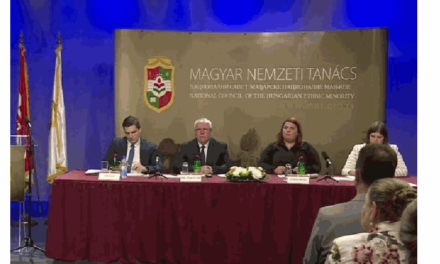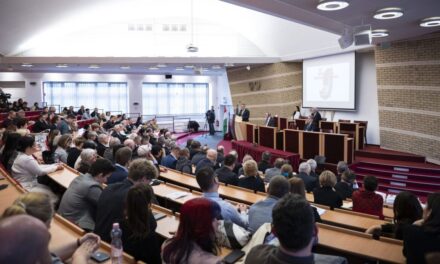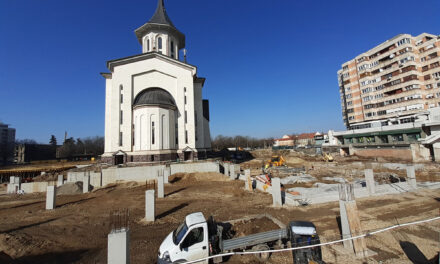In an unusual way, they are preparing for the March 15 national holiday in Cluj-Napoca with red-white-green decorative lighting and festive street decorations, said Géza Antal, the executive president of the Cluj County organization of the Romanian Hungarian Democratic Union (RMDSZ).
As he stated, the association requested that several downtown buildings and the Szamos Bridge be illuminated in red, white, and green on the Hungarian national holiday. The mayor's office of Cluj-Napoca approved the request in the case of the Student Activities Center, as the other buildings do not have adequate technical equipment, he said.
In addition, they requested the decorative lighting of the Ethnography Museum (Redut) and the University Library building under its management from the Cluj county municipality, but they did not receive an answer until Monday afternoon, he added.
For the first time in the history of Cluj-Napoca after the change of regime, Deák Ferenc (Eroilor) Street in the city center will also receive a red-white-green street decoration. In 1848, General József Bem stayed in his house at No. 1 on Főtér yüló utca, which is commemorated by a memorial plaque, which is usually wreathed on March 15.
A huge cockade will be decorated on the balcony of the house, and on every second pillar of the street - which usually have the flag of Romania and the European Union flying - in a red-white-green color combination, the inscription March 15 - Every Hungarian holiday will be read - detailed Géza Antal. He said that the festive decoration will be on display for three days, March 14-15-16, although the RMDSZ requested that it be displayed for the whole week.
Commemorations will be held in about half a hundred settlements in Cluj County on the occasion of the national holiday, jointly organized by the RMDSZ, Hungarian historical churches, schools, civil organizations and cultural institutions, he said. On Monday, the executive chairman of the county presented the program at a press conference with Oláh Emese, deputy mayor of Cluj, and representatives of cultural organizations.
In Cluj-Napoca, the traditional procession starts in front of the Protestant Theological Institute of Cluj-Napoca again this year, then goes through Deák Ferenc Street to Főtér, where there will be an ecumenical service in St. Michael's Church.
The central ceremony continues on the Main Square, after the festive speeches, two hundred young people dressed in national costumes will give a presentation, and the Cluj-Napoca Hungarian Children's Choir will give a concert. The celebrants will also lay a wreath at Sándor Petőfi's former accommodation, the Biasini Hotel.
The festive program will be held in the Student Cultural Center organized by the Consulate General of Hungary in Cluj-Napoca. The Tokos Orchestra and the Bekecs Folk Dance Theater will perform, with guest performers Evelin Vajas and Csaba Marosán.
The central event is accompanied by cultural and youth programs lasting the whole week, among others, a Pilvax quiz and a revolutionary dance hall await the young people, and the Cluj-Napoca student body also holds a memorial at the birthplace of King Mátyás.
With 286,000 inhabitants, Cluj is the second largest city in Romania. According to the latest census data, the Hungarian community is about 33,000 people, and about 50,000 people do not declare their nationality. After the regime change, during the mayorship of Gheorghe Funar, the use of Hungarian symbols was prohibited in the city, and it was only in the mid-2000s - due to civil and legal pressure - that it was possible to move in the direction of multilingualism.
MTI
Featured image: Source: svatsag.ro













